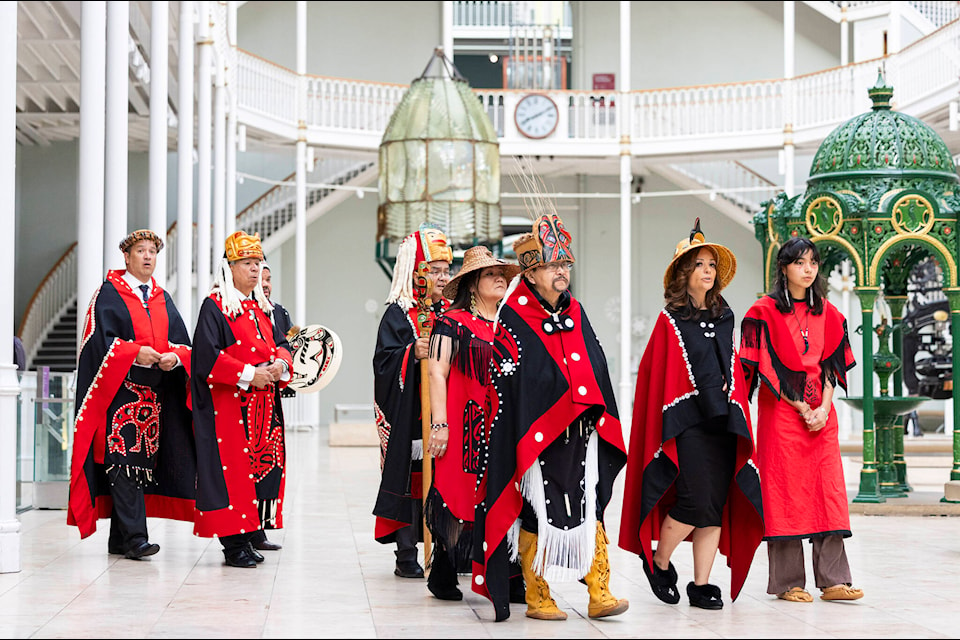After nearly a century on display at the National Museum of Scotland in Edinburgh, a totem pole from the Nisga’a Nation is en route to its homeland.
“It has been missing since it was stolen in 1929,” stated Indigenous Education and Governance Canada Research Chair Amy Parent. “When I first started this and I wrote all the research grants, it was a different time, but it’s been 94 years since it’s been gone.”
The pole is being flown back in a Canadian military aircraft after Parent expressed concerns that the National Museum of Scotland’s original plan of a sea voyage might lead to damage.
Commissioned in 1860, the pole was crafted to honour a member of the House of Ni’isjoohl. This individual, destined to be the next chief, tragically died protecting his family and nation, stated the Nisga’a Lisims Government.
But in 1929, Parent said ethnographer Marius Barbeau stole the pole and building on an existing relationship with the Scottish museum, sold it to the institution.
“He had sent them photos of many other totem poles that were still within the Nass Valley, as well as within Gitxsan territories. He had sent them a catalogue and they chose our totem pole,” said Parent.
“I don’t know why — maybe the price was right; I don’t think we’re ever going to know that, they chose ours — something that was common practice back then when museums wanted to acquire Indigenous belongings. There was a belief at that time that we were going to be a vanishing race.”
READ MORE: Nisga’a memorial pole about to start journey home to B.C. from Scottish museum
Parent said Barbeau arrived in the Nass Valley in the summer of 1929, going to the ancient village of Ank’idaa where he removed a number of poles while residents were away on a food fishing trip.
“He had contacted the federal government of Canada, specifically Duncan Campbell Scott, and he gave them permission to remove our family’s totem pole. Of course, we know now that Canada never had that permission to do that and we never gave him permission, so in our viewpoint and in our history, we see that the pole was stolen. It eventually made its way to the Royal Scottish Museum and arrived there in 1930.”
Parent added that her research which then lead to discussions with the museum about returning the pole resulted in an act of reconciliation.
“We brought a delegation of our senior leadership to the National Museums of Scotland a year ago and we went through a negotiation process that lasted approximately three months. We’re really grateful for their allyship. It wasn’t an easy process.”
“We also know that we have thousands, if not hundreds of thousands, of belongings and cultural treasures that have been scattered throughout the world. It’s going to take more than one generation to get them home,” Parent continued.
“It means everything to our family,” Parent said of the pole’s return. “It’s like bringing home a dear grandparent that’s almost in their 90s and have never met that’s been imprisoned in a European museum for over 90 years.”
Upon its arrival, the pole will be showcased at the Nisga’a Museum in Laxgalts’ap in the Nass Valley. “Right now, we have space within the Nisga’a Museum for another two totem poles,” Parent mentioned, hoping for more support in the future.
“We’ve had an incredibly positive relationship with the National Museums of Scotland and the government of Scotland,” she said.
With files from The Canadian Press
Viktor Elias joined the Terrace Standard in April 2023.
Tips or story ideas? (250) 638-7283 ext. 5411 or viktor.elias@terracestandard.com.
Like the Terrace Standard on Facebook and follow us on Twitter.
